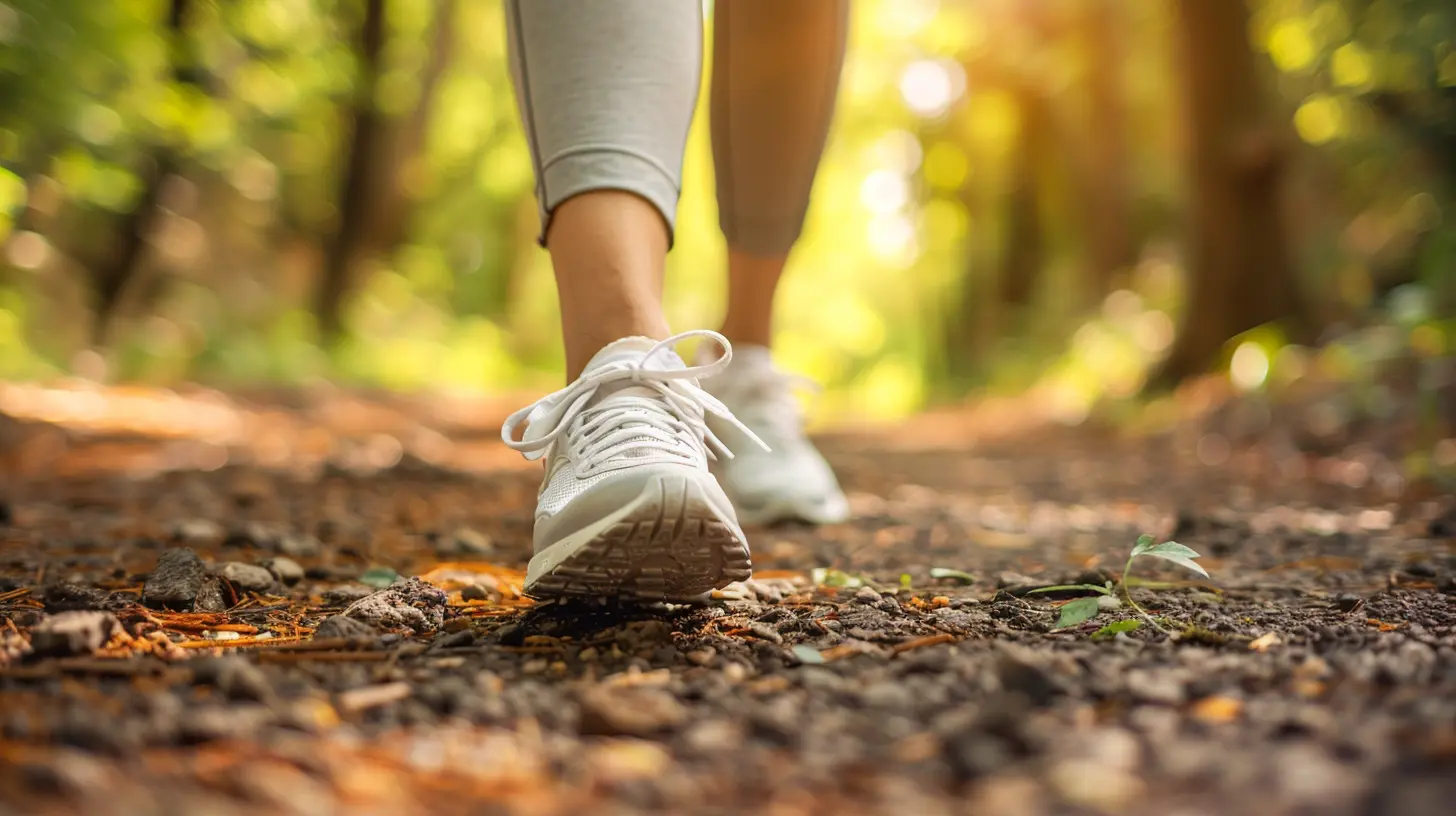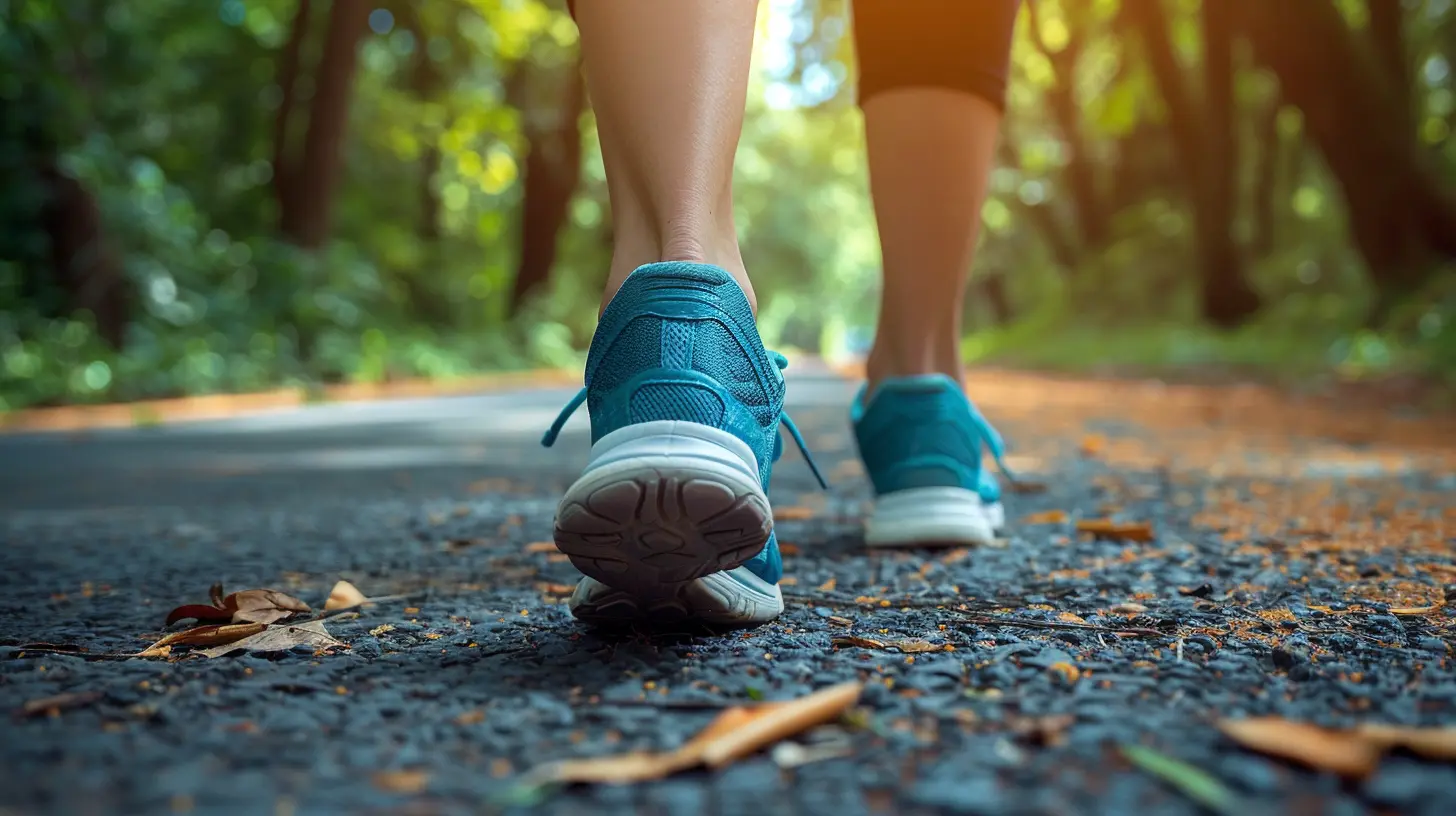The Health Benefits of Walking: Simple Steps Toward Fitness
27 September 2025
Let’s be honest—when you think of getting fit, walking probably doesn’t top your list. It seems too, well… basic. But here’s the kicker: walking is one of the most underrated forms of exercise out there. It’s simple, free, and doesn’t require you to join a gym or wear fancy workout clothes. Just put one foot in front of the other—literally!
In this guide, we’ll dive deep into why walking deserves way more love and attention. Whether you're already active or just starting your health journey, walking can be a game-changer.
Why Walking Is More Powerful Than You Think
You might be surprised to learn that something as simple as walking can drastically improve your overall health. Unlike high-impact workouts that often feel like boot camp sessions, walking is low-intensity yet incredibly effective.The beauty? No age limit. Whether you're 18 or 80, walking welcomes all.
1. It Boosts Heart Health Like a Boss
Let’s get straight to the heart—literally. Walking regularly strengthens your heart, lowers blood pressure, and improves cholesterol levels.According to studies, just 30 minutes a day can reduce your risk of heart disease by up to 30%. Yep, that's right. It's like giving your heart a gentle workout without breaking a sweat.
Want to keep your ticker ticking for the long haul? Walk it out.
2. Say Goodbye to Stress and Hello to Mental Clarity
Ever gone for a walk after a rough day and returned feeling human again? That’s not a coincidence. Walking helps your brain release endorphins—those feel-good hormones that melt stress and lift your mood.Think of it as therapy on the go. No appointment needed.
Want an extra boost? Try walking in nature. Studies show that a brisk stroll through a green space reduces anxiety and improves focus more than walking in urban areas. Nature + movement = mental gold.
3. A Wafer-Thin Wallet? No Problem. It’s Free Fitness
Unlike yoga classes or expensive fitness trackers, walking doesn’t cost a dime. All you need are a decent pair of shoes and some motivation.If you're someone who avoids workouts because of the price tag, walking’s got your back. And honestly, with inflation these days, free workouts are a blessing.
4. Sheds Pounds in the Background
Let’s talk weight loss—but without the stress. Walking might not torch calories like running does, but it still adds up.A person weighing around 160 pounds burns about 314 calories by walking for one hour at a moderate pace. Not bad for something you can do while listening to your favorite podcast or chatting with a friend!
And the best part? It doesn’t feel like punishment. You don’t dread walking the way you might dread burpees.
5. Improves Digestion and Regulates Blood Sugar
Here's a fun fact: walking after meals is like a mini tune-up for your body.Just 15 minutes of post-meal walking can help reduce blood sugar spikes after eating. This is especially helpful for people who are managing diabetes or insulin resistance.
Not only that, but it also helps keep things… ahem, moving in the digestive department. If you struggle with bloating or sluggish digestion, walking could be your new best friend.
6. Strengthens Muscles and Joints Without the Grunt Work
You don’t have to be squatting iron like The Rock to build strength. A consistent walking routine tones your legs, glutes, and core—especially if you're walking hills or adding some stairs into the mix.Plus, walking keeps your joints flexible and nimble, which is critical as we age. It’s joint-friendly and doesn’t leave your knees screaming in agony. Arthritis warriors, this one’s for you.
7. Supports Better Sleep
Struggling to fall asleep? You might want to swap your nightly social scroll for an evening walk.Walking helps regulate your circadian rhythm and reduces tension in the body, making it easier to fall asleep and stay asleep.
No need for melatonin gummies when you’ve got walking in your toolkit.
8. Enhances Creativity and Problem-Solving Skills
Ever noticed how your best ideas pop up when you're not sitting at your desk? That’s not a coincidence. Walking boosts creative thinking by opening up neural pathways you'd never explore while glued to a screen.In fact, a Stanford study found that walking increases creative output by roughly 60%. Whether you're writing a blog post (guilty as charged) or figuring out what to make for dinner, a walk might be just the clarity you need.
9. Improves Posture and Balance
If you’ve been hunching over a desk all day, walking can help reset your posture. When you walk with awareness—head up, shoulders back, core engaged—it reminds your body how it’s supposed to stand.Regular walking also improves your balance and coordination, which becomes increasingly vital as you get older. No one wants to be that person tumbling over a curb, right?
10. Easy to Make Social—or Solo
Walking adjusts to your mood. Need alone time to decompress? Grab your headphones and go solo. Want to catch up with a friend? Make it a walk-and-talk.You can even turn it into family time or take your dog along. It's flexible and fun.
Pro Tips to Get the Most out of Your Walks
Alright, so you're on board with walking. But how do you get the biggest bang for your steps?Here are some simple ways to level up your walks:
- Use proper footwear: Invest in supportive walking shoes to avoid foot pain and blisters.
- Add intervals: Try alternating between a moderate pace and a brisk pace. This boosts calorie burn and keeps things interesting.
- Mind your posture: Keep your head up, shoulders relaxed, and arms swinging naturally.
- Stay consistent: Aim for at least 150 minutes of moderate-intensity walking per week.
- Track your progress: Use a pedometer or smartphone app to keep yourself motivated.
- Mix it up: Change your route, walk at different times, or explore new neighborhoods.
Common Myths About Walking (Busted!)
Let’s clear the air on some walking myths you might have heard:❌ Myth: Walking isn’t a real workout.
✅ Truth: Walking IS exercise. It improves cardiovascular health, burns calories, and strengthens muscles—just with less sweat.
❌ Myth: You need to walk 10,000 steps a day.
✅ Truth: While 10,000 steps is a nice goal, even a few thousand steps a day can make a meaningful difference. Start where you are.
❌ Myth: Walking is only for older adults.
✅ Truth: Walking benefits every age group. Whether you're 25 or 75, it’s a powerful wellness tool.
Okay, But What If I Don’t Have Time?
Totally get it—life can get nuts. But here’s a tip: walking doesn’t have to be “all or nothing.”Try this:
- Park further away from the entrance.
- Take walking meetings at work.
- Walk while taking phone calls.
- Use your lunch break for a quick 10-minute stroll.
Little walks add up. Think of them as health deposits in your daily wellness bank.
Final Thoughts: Small Steps, Big Doses of Health
Walking might not look flashy on Instagram, but it's the real MVP when it comes to sustainable fitness. It’s gentle but effective, simple yet powerful. Whether you're walking to lose weight, boost your mood, or just clear your head, the benefits are too good to ignore.So next time you're debating whether or not it's worth lacing up your sneakers, just remember: every step counts.
Get out there and take those simple steps toward a healthier, happier you. One walk at a time.
all images in this post were generated using AI tools
Category:
ExerciseAuthor:

Angelo McGillivray
Discussion
rate this article
1 comments
Jackson Vaughn
Great insights! Walking truly is an accessible path to health.
October 3, 2025 at 4:02 AM

Angelo McGillivray
Thank you! I'm glad you found the insights helpful. Walking is indeed a simple yet powerful way to enhance health!


